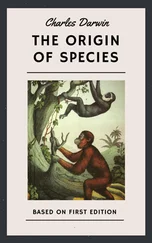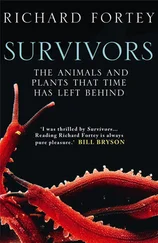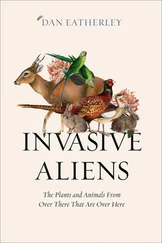Charles Darwin - The Variation of Animals and Plants under Domestication — Volume 1
Здесь есть возможность читать онлайн «Charles Darwin - The Variation of Animals and Plants under Domestication — Volume 1» — ознакомительный отрывок электронной книги совершенно бесплатно, а после прочтения отрывка купить полную версию. В некоторых случаях можно слушать аудио, скачать через торрент в формате fb2 и присутствует краткое содержание. Жанр: foreign_antique, foreign_prose, на английском языке. Описание произведения, (предисловие) а так же отзывы посетителей доступны на портале библиотеки ЛибКат.
- Название:The Variation of Animals and Plants under Domestication — Volume 1
- Автор:
- Жанр:
- Год:неизвестен
- ISBN:нет данных
- Рейтинг книги:5 / 5. Голосов: 1
-
Избранное:Добавить в избранное
- Отзывы:
-
Ваша оценка:
- 100
- 1
- 2
- 3
- 4
- 5
The Variation of Animals and Plants under Domestication — Volume 1: краткое содержание, описание и аннотация
Предлагаем к чтению аннотацию, описание, краткое содержание или предисловие (зависит от того, что написал сам автор книги «The Variation of Animals and Plants under Domestication — Volume 1»). Если вы не нашли необходимую информацию о книге — напишите в комментариях, мы постараемся отыскать её.
The Variation of Animals and Plants under Domestication — Volume 1 — читать онлайн ознакомительный отрывок
Ниже представлен текст книги, разбитый по страницам. Система сохранения места последней прочитанной страницы, позволяет с удобством читать онлайн бесплатно книгу «The Variation of Animals and Plants under Domestication — Volume 1», без необходимости каждый раз заново искать на чём Вы остановились. Поставьте закладку, и сможете в любой момент перейти на страницу, на которой закончили чтение.
Интервал:
Закладка:
[From the several foregoing facts we see that reversion in the feral state gives no indication of the colour or size of the aboriginal parent-species. One fact, however, with respect to the colouring of domestic dogs, I at one time hoped might have thrown some light on their origin; and it is worth giving, as showing how colouring follows laws, even in so anciently and thoroughly domesticated an animal as the dog. Black dogs with tan-coloured feet, whatever breed they may belong to, almost invariably have a tan- coloured spot on the upper and inner corners of each eye, and their lips are generally thus coloured. I have seen only two exceptions to this rule, namely, in a spaniel and terrier. Dogs of a light-brown colour often have a lighter, yellowish-brown spot over the eyes; sometimes the spot is white, and in a mongrel terrier the spot was black. Mr. Waring kindly examined for me a stud of fifteen greyhounds in Suffolk: eleven of them were black, or black and white, or brindled, and these had no eye-spots; but three were red and one slaty-blue, and these four had dark-coloured spots over their eyes. Although the spots thus sometimes differ in colour, they strongly tend to be tan-coloured; this is proved by my having seen four spaniels, a setter, two Yorkshire shepherd dogs, a large mongrel, and some fox-hounds, coloured black and white, with not a trace of tan-colour, excepting the spots over the eyes, and sometimes a little on the feet. These latter cases, and many others, show plainly that the colour of the feet and the eye-spots are in some way correlated. I have noticed, in various breeds, every gradation, from the whole face being tan-coloured, to a complete ring round the eyes, to a minute spot over the inner and upper corners. The spots occur in various sub-breeds of terriers and spaniels; in setters; in hounds of various kinds, including the turnspit-like German badger-hound; in shepherd dogs; in a mongrel, of which neither parent had the spots; in one pure bulldog, though the spots were in this case almost white; and in greyhounds, — but true black-and-tan greyhounds are excessively rare; nevertheless I have been assured by Mr. Warwick, that one ran at the Caledonian Champion meeting of April 1860, and was "marked precisely like a black-and-tan terrier." This dog, or another exactly the same colour, ran at the Scottish National Club on the 21st of March, 1865; and I hear from Mr. C.M. Browne, that "there was no reason either on the sire or dam side for the appearance of this unusual colour." Mr. Swinhoe at my request looked at the dogs in China, at Amoy, and he soon noticed a brown dog with yellow spots over the eyes. Colonel H. Smith (1/40. 'The Naturalist Library' Dogs, volume 10 pages 4, 19.) figures the magnificent black mastiff of Thibet with a tan-coloured stripe over the eyes, feet, and chaps; and what is more singular, he figures the Alco, or native domestic dog of Mexico, as black and white, with narrow tan-coloured rings round the eyes; at the Exhibition of dogs in London, May 1863, a so-called forest dog from North-West Mexico was shown, which had pale tan-coloured spots over the eyes. The occurrence of these tan-coloured spots in dogs of such extremely different breeds, living in various parts of the world, makes the fact highly remarkable.
We shall hereafter see, especially in the chapter on Pigeons, that coloured marks are strongly inherited, and that they often aid us in discovering the primitive forms of our domestic races. Hence, if any wild canine species had distinctly exhibited the tan-coloured spots over the eyes, it might have been argued that this was the parent-form of nearly all our domestic races. But after looking at many coloured plates, and through the whole collection of skins in the British Museum, I can find no species thus marked. It is no doubt possible that some extinct species was thus coloured. On the other hand, in looking at the various species, there seems to be a tolerably plain correlation between tan-coloured legs and face; and less frequently between black legs and a black face; and this general rule of colouring explains to a certain extent the above-given cases of correlation between the eye-spots and the colour of the feet. Moreover, some jackals and foxes have a trace of a white ring round their eyes, as in C. mesomelas, C. aureus, and (judging from Colonel H. Smith's drawing) in C. alopex, and C. thaleb. Other species have a trace of a black line over the corners of the eyes, as in C. variegatus, cinereo-variegatus, and fulvus, and the wild Dingo. Hence I am inclined to conclude that a tendency for tan-coloured spots to appear over the eyes in the various breeds of dogs, is analogous to the case observed by Desmarest, namely, that when any white appears on a dog the tip of the tail is always white, "de maniere a rappeler la tache terminale de meme couleur, qui caracterise la plupart des Canides sauvages." (1/41. Quoted by Prof. Gervais 'Hist. Nat. Mamm.' tome 2 page 66.) This rule, however, as I am assured by Mr. Jesse, does not invariably hold good.]
It has been objected that our domestic dogs cannot be descended from wolves or jackals, because their periods of gestation are different. The supposed difference rests on statements made by Buffon, Gilibert, Bechstein, and others; but these are now known to be erroneous; and the period is found to agree in the wolf, jackal, and dog, as closely as could be expected, for it is often in some degree variable. (1/42. J. Hunter shows that the long period of seventy-three days given by Buffon is easily explained by the bitch having received the dog many times during a period of sixteen days ('Phil. Transact.' 1787 page 353). Hunter found that the gestation of a mongrel from wolf and dog ('Phil. Transact.' 1789 page 160) apparently was sixty-three days, for she received the dog more than once. The period of a mongrel dog and jackal was fifty-nine days. Fred. Cuvier found the period of gestation of the wolf to be ('Dict. Class. d'Hist. Nat.' tome 4 page 8) two months and a few days, which agrees with the dog. Isid G. St. — Hilaire, who has discussed the whole subject, and from whom I quote Bellingeri, states ('Hist. Nat. Gen.' tome 3 page 112) that in the Jardin des Plantes the period of the jackal has been found to be from sixty to sixty-three days, exactly as with the dog.) Tessier, who has closely attended to this subject, allows a difference of four days in the gestation of the dog. The Rev. W.D. Fox has given me three carefully recorded cases of retrievers, in which the bitch was put only once to the dog; and not counting this day, but counting that of parturition, the periods were fifty-nine, sixty-two, and sixty-seven days. The average period is sixty-three days; but Bellingeri states that this applies only to large dogs; and that for small races it is from sixty to sixty-three days; Mr. Eyton of Eyton, who has had much experience with dogs, also informs me that the time is apt to be longer with large than with small dogs.
F. Cuvier has objected that the jackal would not have been domesticated on account of its offensive smell; but savages are not sensitive in this respect. The degree of odour, also, differs in the different kinds of jackal (1/43. See Isid. Geoffroy St. — Hilaire 'Hist. Nat. Gen.' tome 3 page 112, on the odour of jackals. Col. Ham. Smith in 'Nat. Lib.' volume 10 page 289.); and Colonel H. Smith makes a sectional division of the group with one character dependent on not being offensive. On the other hand, dogs — for instance, rough and smooth terriers — differ much in this respect; and M. Godron states that the hairless so-called Turkish dog is more odoriferous than other dogs. Isidore Geoffroy (1/44. Quoted by Quatrefages in 'Bull. Soc. d'Acclimat.' May 11, 1863.) gave to a dog the same odour as that from a jackal by feeding it on raw flesh.
The belief that our dogs are descended from wolves, jackals, South American Canidae, and other species, suggests a far more important difficulty. These animals in their undomesticated state, judging from a widely-spread analogy, would have been in some degree sterile if intercrossed; and such sterility will be admitted as almost certain by all those who believe that the lessened fertility of crossed forms is an infallible criterion of specific distinctness. Anyhow these animals keep distinct in the countries which they inhabit in common. On the other hand, all domestic dogs, which are here supposed to be descended from several distinct species, are, as far as is known, mutually fertile together. But, as Broca has well remarked (1/45. 'Journal de la Physiologie' tome 2 page 385.), the fertility of successive generations of mongrel dogs has never been scrutinised with that care which is thought indispensable when species are crossed. The few facts leading to the conclusion that the sexual feelings and reproductive powers differ in the several races of the dog when crossed are (passing over mere size as rendering propagation difficult) as follows: the Mexican Alco (1/46. See Mr. R. Hill's excellent account of this breed in Gosse's 'Jamaica' page 338; Rengger 'Saugethiere von Paraguay' s. 153. With respect to Spitz dogs, see Bechstein's 'Naturgesch. Deutschlands' 1801 b. 1 s. 638. With respect to Dr. Hodgkin's statement made before Brit. Assoc. see 'The Zoologist' volume 4 for 1845-46 page 1097.) apparently dislikes dogs of other kinds, but this perhaps is not strictly a sexual feeling; the hairless endemic dog of Paraguay, according to Rengger, mixes less with the European races than these do with each other; the Spitz dog in Germany is said to receive the fox more readily than do other breeds; and Dr. Hodgkin states that a female Dingo in England attracted the male wild foxes. If these latter statements can be trusted, they prove some degree of sexual difference in the breeds of the dog. But the fact remains that our domestic dogs, differing so widely as they do in external structure, are far more fertile together than we have reason to believe their supposed wild parents would have been. Pallas assumes (1/47. 'Acta Acad. St. Petersburgh' 1780 part 2 pages 84, 100.) that a long course of domestication eliminates that sterility which the parent-species would have exhibited if only lately captured; no distinct facts are recorded in support of this hypothesis; but the evidence seems to me so strong (independently of the evidence derived from other domesticated animals) in favour of our domestic dogs having descended from several wild stocks, that I am inclined to admit the truth of this hypothesis.
Читать дальшеИнтервал:
Закладка:
Похожие книги на «The Variation of Animals and Plants under Domestication — Volume 1»
Представляем Вашему вниманию похожие книги на «The Variation of Animals and Plants under Domestication — Volume 1» списком для выбора. Мы отобрали схожую по названию и смыслу литературу в надежде предоставить читателям больше вариантов отыскать новые, интересные, ещё непрочитанные произведения.
Обсуждение, отзывы о книге «The Variation of Animals and Plants under Domestication — Volume 1» и просто собственные мнения читателей. Оставьте ваши комментарии, напишите, что Вы думаете о произведении, его смысле или главных героях. Укажите что конкретно понравилось, а что нет, и почему Вы так считаете.












